Brahma Chicken
- January 23, 2024
- 0 comment
The Brahma chicken, often affectionately referred to as the “King of Chickens,” is a captivating breed renowned for its remarkable characteristics and rich history. Originating in the United States during the mid-19th century, these majestic birds are the product of careful breeding, which combined large chickens imported from China with breeds like Malay and Cochin. Their name, “Brahma,” was inspired by the Hindu god of creation, reflecting the breed’s imposing and regal presence.
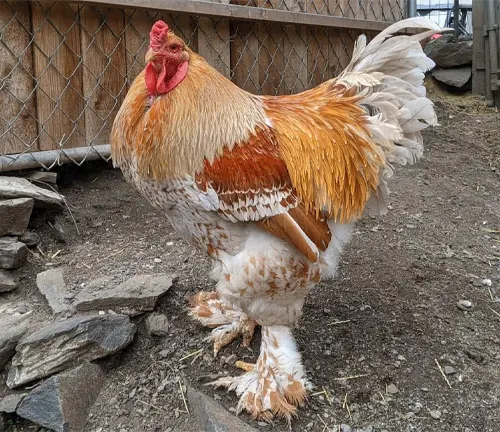
What sets Brahma chickens apart is their impressive size, with roosters weighing up to 12 pounds and hens reaching approximately 10 pounds. Covered in lush feathers of various colors, including light, dark, and buff, they are not only striking in appearance but also possess a friendly and docile temperament, making them a popular choice for backyard flocks. With a reputation for excellent egg-laying capabilities, attentive mothering, and adaptability to various climates, Brahma chickens continue to capture the hearts of poultry enthusiasts and farmers alike.
| Specification | Description |
|---|---|
| Size | Roosters: Up to 12 pounds, Hens: Around 10 pounds |
| Feathers | Lush and varied colors (light, dark, buff) |
| Temperament | Friendly, docile, and easy to handle |
| Egg Production | Prolific brown egg layers, up to 200 eggs/year |
| Broodiness | Attentive and caring mothers |
| Lifespan | Average 5 to 8 years with proper care |
| Health Considerations | Susceptible to bumblefoot, respiratory issues, obesity due to size |
| Adaptability | Can thrive in various climates with proper shelter and care |
The Fascinating World of Brahma Chickens
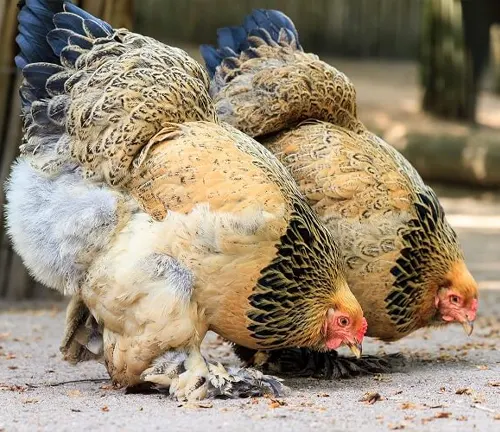
Brahma chickens, often referred to as the “King of Chickens,” have been capturing the hearts of poultry enthusiasts and farmers alike for generations. These magnificent birds, known for their towering stature, gentle disposition, and exceptional meat quality, have a rich history and a special place in the world of poultry farming. In this article, we will delve into the intriguing world of Brahma chickens, exploring their origins, characteristics, care requirements, and more.
The History of Brahma Chickens
A Glimpse into the Past
Brahma chickens trace their roots back to the United States in the mid-19th century. They were originally developed by crossing large chickens imported from China with birds like the Malay and Cochin breeds. The result was a breed that embodied strength, grace, and size.
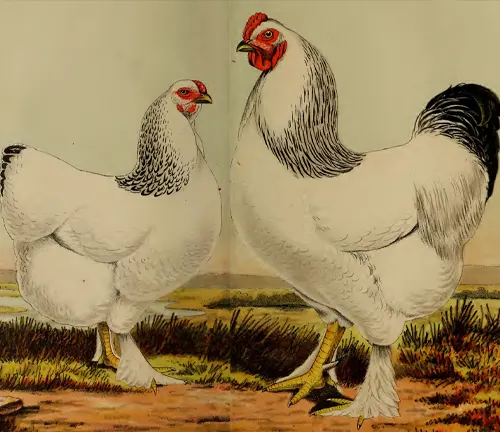
A Royal Name
The name “Brahma” was inspired by the Hindu god of creation, Brahma. This nomenclature reflects the majestic presence and regal appearance of these chickens.
Distinctive Characteristics
Size and Appearance
One of the most striking features of Brahma chickens is their size. These birds are giants in the poultry world, with roosters weighing up to 12 pounds and hens reaching around 10 pounds. Their massive bodies are covered in lush feathers that come in various colors, including light, dark, and buff.
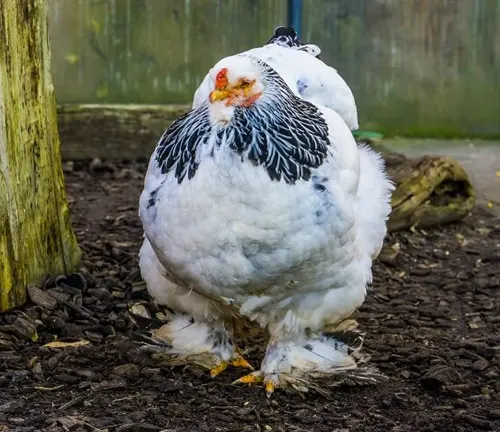
Friendly Temperament
Despite their imposing size, Brahma chickens are known for their gentle and friendly disposition. They are often described as docile and easy to handle, making them an excellent choice for backyard flocks.
Raising Brahma Chickens
Housing Requirements
Brahma chickens require a spacious and well-ventilated coop due to their size. Adequate protection from extreme weather conditions is essential. Ensure that the coop is clean and dry, as these birds are susceptible to moisture-related health issues.


Feeding and Nutrition
Providing a balanced diet is crucial for the health and well-being of Brahma chickens. They enjoy foraging for insects and grains, but a high-quality poultry feed should be the primary component of their diet. Additionally, fresh water should always be readily available.
Breeding and Reproduction
Egg Production
Brahma hens are known for their excellent egg-laying capabilities. They typically produce brown eggs, and their large size means they lay larger eggs compared to many other breeds. A single Brahma hen can lay up to 200 eggs in a year.

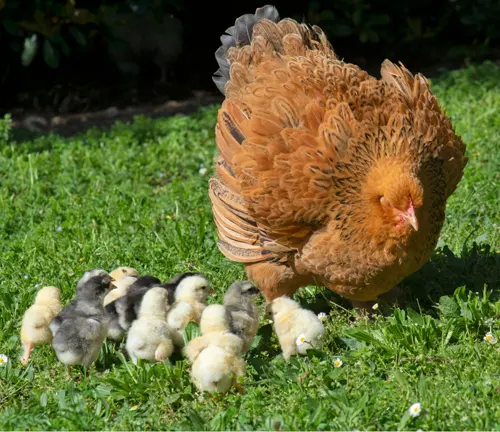
Broodiness
Brahma hens are also renowned for their broody nature. They make attentive and caring mothers, often hatching and raising their chicks with great dedication.
Health Considerations
Vigilance is Key
Like all chicken breeds, Brahma chickens are susceptible to certain health issues. Regular health check-ups and vaccination schedules are essential to keep your flock in optimal condition.
Common Health Problems
Some common health concerns for Brahma chickens include bumblefoot, respiratory issues, and obesity due to their large size. Early detection and prompt treatment are vital in maintaining their well-being.
Different Species
Light Brahma
Light Brahma chickens are known for their striking white plumage with black tail feathers and a prominent black neck hackle. They are one of the original varieties of Brahma chickens.

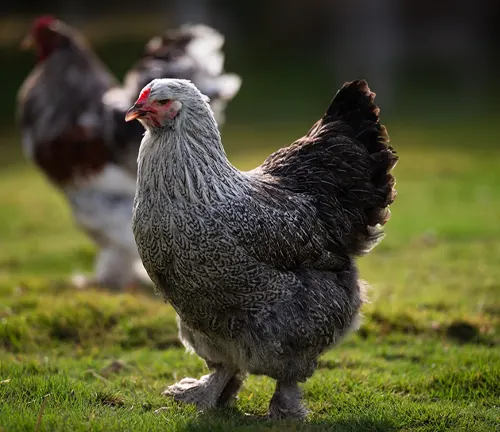
Dark Brahma
Dark Brahmas exhibit deep black plumage with white markings. Their feathers are predominantly black with white accents on the head, neck, and tail.
Buff Brahma
Buff Brahmas are characterized by their warm, golden-buff feathers. They have a gentle and attractive appearance with a slight contrast in color between their feathers.
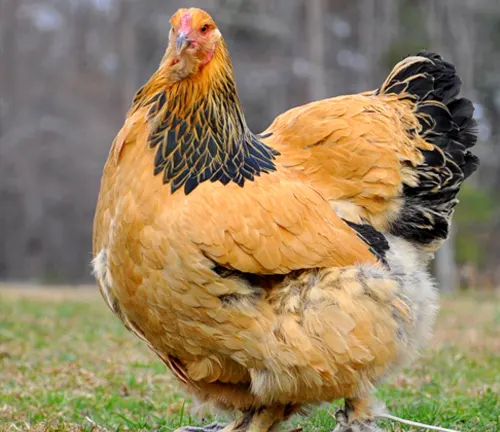
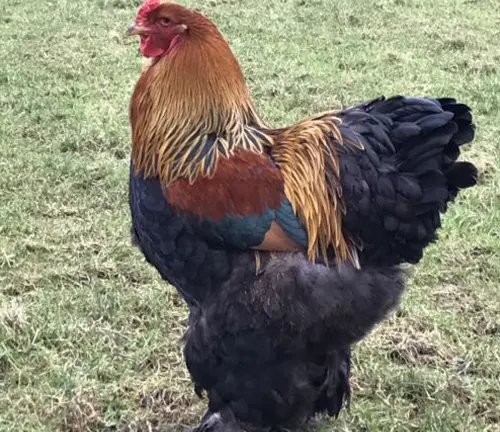
Partridge Brahma
Partridge Brahmas have a distinctive color pattern with reddish-brown feathers edged in black. They display a rich and earthy appearance.
Columbian Brahma
Columbian Brahmas have a unique coloration, featuring white bodies with black necks and tail feathers. They are known for their eye-catching contrast.
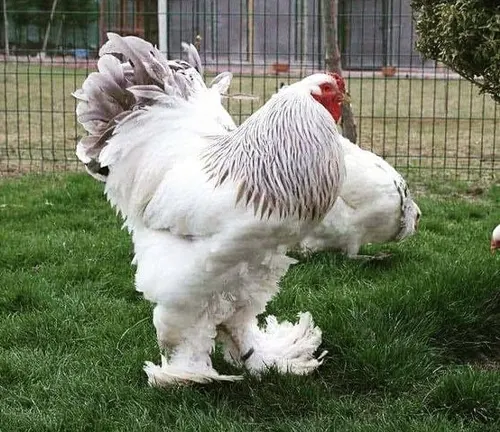

Gold Penciled Brahma
Gold Penciled Brahmas showcase intricate and fine golden penciling on their feathers. They have a beautiful and intricate appearance.
Silver Penciled Brahma
Silver Penciled Brahmas exhibit a similar feather pattern to the Gold Penciled variety, but with silvery-white feathers instead of golden ones.
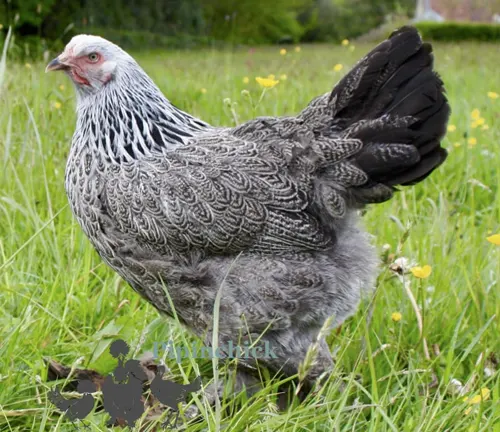
Frequently Asked Question (FAQs)
- What is the origin of Brahma chickens?
Brahma chickens originated in the United States in the mid-19th century. They were developed by crossing large chickens from China with breeds like Malay and Cochin. - How big do Brahma chickens get?
Brahma chickens can reach impressive sizes, with roosters weighing up to 12 pounds and hens reaching approximately 10 pounds. - What is the temperament of Brahma chickens like?
Brahma chickens are known for their gentle and docile temperament. They are friendly, easy to handle, and often described as calm and placid. - Are Brahma chickens suitable for backyard flocks?
Yes, Brahma chickens are well-suited for backyard flocks due to their friendly nature, adaptability, and striking appearance. - Do Brahma chickens lay large eggs?
Yes, Brahma hens are prolific layers of large brown eggs. Each hen can produce up to 200 eggs per year. - What colors do Brahma chickens come in?
Brahma chickens come in various colors and patterns, including Light Brahma, Dark Brahma, Buff Brahma, Partridge Brahma, Columbian Brahma, Gold Penciled Brahma, and Silver Penciled Brahma. - How do you care for Brahma chickens during the winter?
Providing a well-insulated and draft-free coop, along with access to fresh water and a balanced diet, is essential to care for Brahma chickens during the winter. - Can Brahma chickens handle hot climates?
Yes, Brahma chickens can adapt to hot climates with proper shelter, ventilation, and access to cool water. - Do Brahma chickens require special grooming due to their feathered feet?
Regular maintenance, such as keeping their feathered feet clean and trimmed, is advisable to prevent health issues. - Are Brahma chickens prone to any specific health issues?
Common health concerns for Brahma chickens include bumblefoot, respiratory issues, and obesity due to their large size. Regular health check-ups are important. - What is the lifespan of a Brahma chicken?
On average, Brahma chickens can live for 5 to 8 years with proper care. - What is the typical egg production of Brahma hens?
Brahma hens can lay up to 200 eggs per year, making them excellent layers. - Are Brahma chickens good for meat production?
Yes, Brahma chickens are valued for their large size and meat quality, making them suitable for meat production. - Can Brahma chickens be kept in a mixed-breed flock?
Yes, Brahma chickens can coexist harmoniously with other chicken breeds in a mixed-breed flock, provided they have proper care and space. - Do Brahma chickens need a specific diet or feeding regimen?
While they enjoy foraging, a high-quality poultry feed and access to fresh water are essential for their well-being. - Are there any unique features in the Brahma roosters that set them apart from other breeds?
Brahma roosters are known for their striking appearance, with prominent hackles and combs, which contribute to their majestic presence. - What is the history behind the name “Brahma” for these chickens?
The name “Brahma” was inspired by the Hindu god of creation, Brahma, due to the breed’s regal and imposing stature. - How do you prevent and treat bumblefoot in Brahma chickens?
Preventing bumblefoot involves maintaining clean and dry living conditions. If it occurs, prompt treatment by a veterinarian is necessary. - Are Brahma chickens easy to train or handle?
Yes, Brahma chickens are generally easy to train and handle due to their friendly and docile nature. - What are some common misconceptions about Brahma chickens?
Common misconceptions include thinking they are difficult to care for due to their size and assuming they are solely meat birds when they are also excellent egg layers.




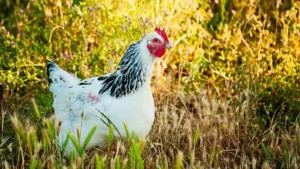
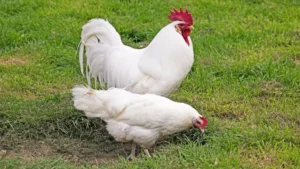




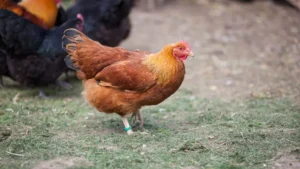

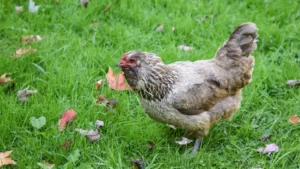

Leave your comment